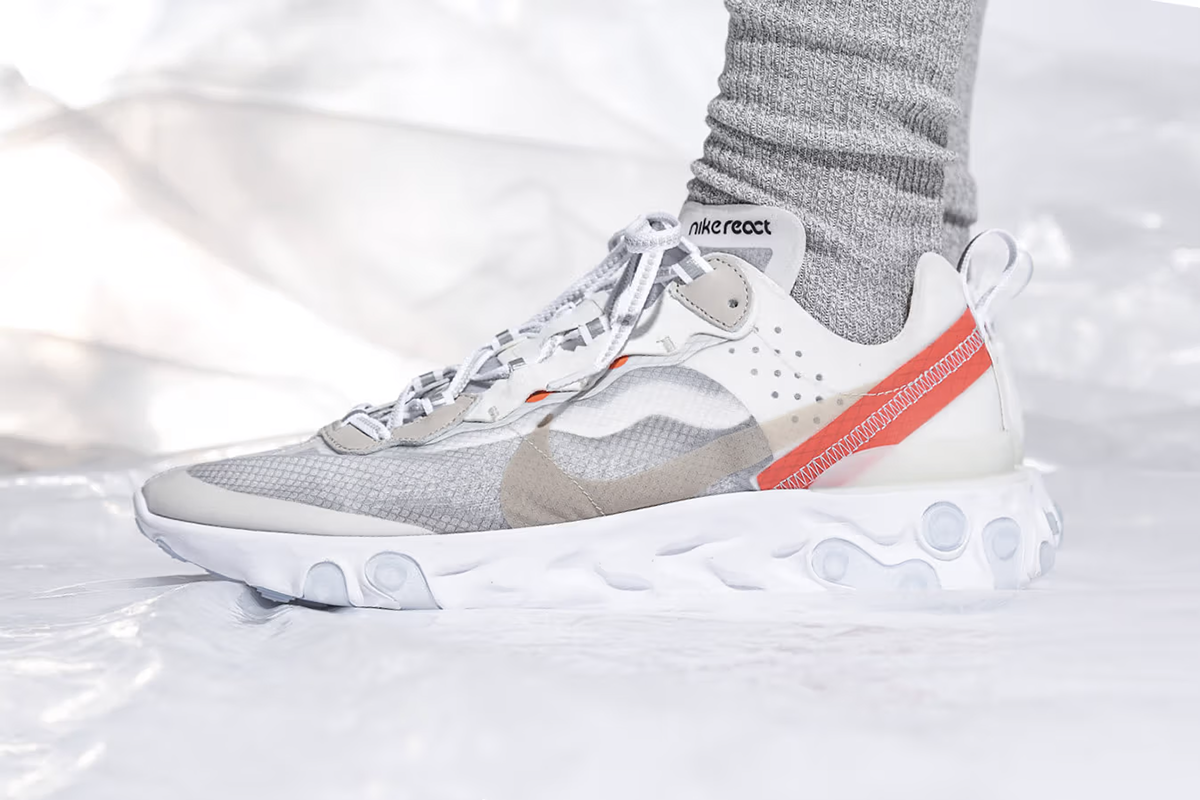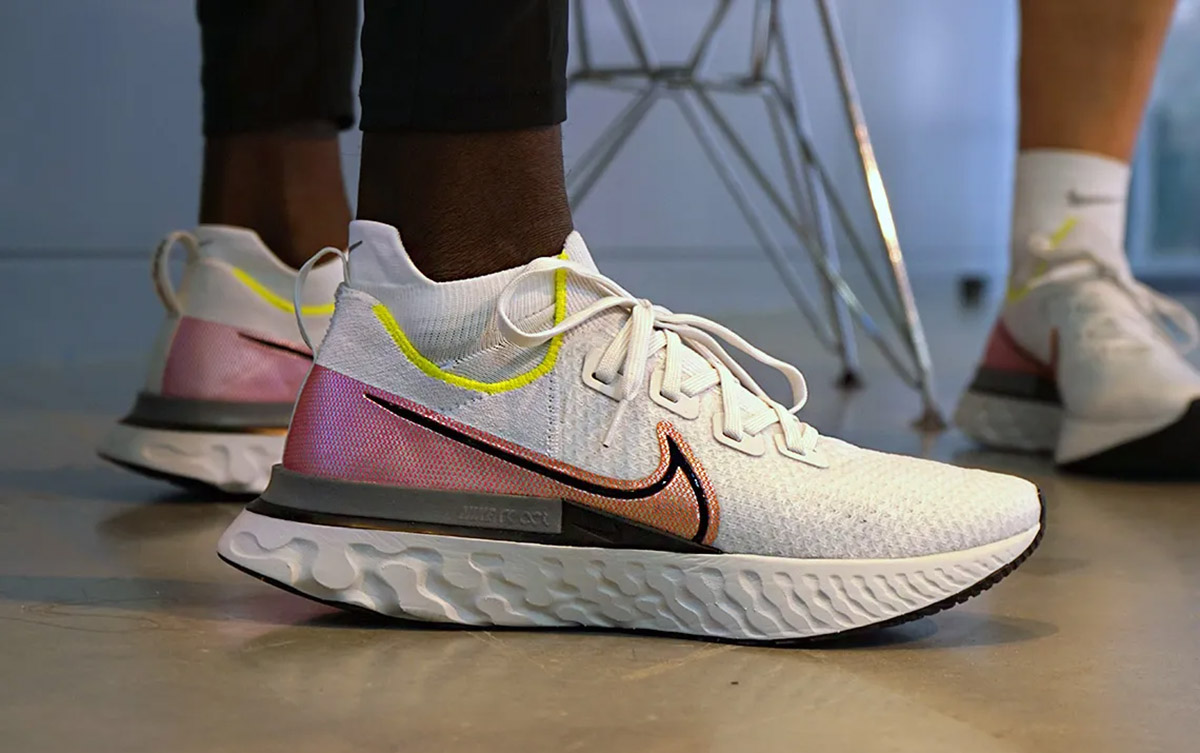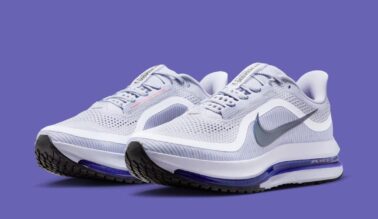This post may contain affiliate links. Please read our disclosure policy.
Introduction to Nike React Technology
Nike React technology is a game changer in the world of sports shoes, designed to give you that extra spring in your step. Imagine running on clouds – that’s what Nike aimed for when they introduced React technology. It’s all about providing outstanding cushioning and bounce, making every step comfortable and every jump efficient. What sets React apart? It’s the result of intense research and innovative engineering. Nike didn’t just want to create another cushioning system; they wanted something that could adapt to the individual runner’s style, weight, and speed, offering a personalized feel. So, whether you’re sprinting towards the finish line, jumping high during a basketball game, or just going for a leisurely walk, Nike React technology works to make the experience better. It’s light, it’s durable, and most importantly, it feels amazing.

The Birth of Nike React: A Historical Overview
Nike React technology wasn’t always the powerhouse of comfort and performance it is today. It began as a groundbreaking project, fueled by Nike’s relentless drive to innovate. In 2017, Nike introduced the world to React technology, aiming to provide unparalleled cushioning and energy return for athletes and casual wearers alike. This tech was different because it combined a unique foam that was both incredibly soft and responsive. Think about stepping on a cloud that pushes you back up. That’s the essence of Nike React. Unlike other cushioning like the Nike Air, React was designed to be durable and reactive to every step, ensuring a consistent experience over high mileage. The first shoe to sport this innovation was the Nike Epic React Flyknit, which quickly gained popularity for its lightweight feel and superior comfort. From there, Nike continued to refine and expand React across its product lines, marking the birth of a new era in athletic footwear. Whether you’re a runner or just love a good sneaker, the introduction of Nike React was a game-changer, setting new standards for what we expect from our shoes.

Key Milestones in the Evolution of Nike React
Nike React technology didn’t just appear out of thin air. It’s a story of innovation and relentless improvement. Let’s break it down. In 2016, Nike introduced the world to React technology. They promised something big – a cushioning system that was not just lightweight but also incredibly responsive. And guess what? They delivered. By 2017, Nike had rolled this tech out in basketball sneakers, starting with the Nike React Hyperdunk 2017 Flyknit. Athletes raved about the comfort and energy return. It felt like bouncing on air. That same year, runners got their first taste of React with the Nike Epic React Flyknit. Running on pavement felt less punishing, thanks to this new foam. Fast forward to 2018, and Nike wasn’t slowing down. They introduced the React Element 87, blending performance with streetwear style. It was a hit, showing that React technology wasn’t just about sports; it was about making a statement. In 2020, Nike pushed the envelope again with the React Infinity Run. Designed to reduce injuries, this shoe was all about making running safer without compromising on comfort or performance. Through each milestone, Nike React evolved, proving that when it comes to innovation, they’re always in the race.
Breakthroughs in Materials and Design
Nike React technology marked a turning point for runners and athletes. It boiled down to a simple goal: more bounce, less weight. This tech, introduced in 2017, changed the game with a foam that was not just lighter but also more durable and responsive than anything before it. The secret sauce? A unique blend of materials that delivered a cushy yet responsive ride. These sneakers could take a beating and bounce back, stronger than ever, mile after mile.
But it wasn’t just about the foam. The design of shoes using React technology also saw big shifts. Nike went minimalist, shaving off unnecessary elements to focus on what truly matters: performance and comfort. Every curve and contour was reimagined. This wasn’t about looks; it was about creating a seamless bond between the athlete and the ground.
In essence, Nike’s breakthroughs in materials and design with React technology redefined what we expect from our sports shoes. Lighter, stronger, and built for the long haul, React shoes became synonymous with pushing limits. Whether you’re hitting the pavement hard or weaving through the urban maze, the React tech is there, evolving, pushing the envelope on what it means to go the distance.
Popular Shoes Featuring Nike React Technology
Nike React technology has made a big splash since its inception, earning a spot in some of the most popular shoe models. Let’s dive into a few standouts. The Nike Epic React Flyknit was the first to showcase this tech, providing an unbeatable combo of comfort and performance. It’s light, durable, and feels like you’re walking on clouds. Next up, the Nike React Element 55 and 87 models, throwing a stylish twist into the mix.

These shoes matched streetwear trends with their unique design and comfort, making them instant hits. The Nike Odyssey React focuses on runners, bringing them a shoe that’s resilient and supportive over long distances.

Another runner’s favorite, the Nike React Infinity Run, aims at reducing injuries and is perfect for those long, tough workouts. And let’s not forget about the Jordan React Havoc, which extends the React technology into the basketball realm, offering players enhanced responsiveness on the court. Each shoe in this lineup demonstrates the versatility and innovation of Nike React technology, making it clear why it’s become a cornerstone in athletic footwear.
Nike React in Professional Sports
Nike React technology has made a significant impact in professional sports, providing athletes with an edge due to its unique blend of comfort, durability, and responsiveness. Originally launched in 2018, the React foam quickly became a favorite among runners for its exceptional energy return. This means athletes can go further and faster with less fatigue. But it’s not just runners who benefit. Basketball players, for instance, have seen a game-changing advantage with Nike React. The foam’s ability to absorb impact and then snap back to its original shape is perfect for the high jumps and quick movements on the court.
Consider the adaptation of the React technology in the NBA. Players often praise the sneakers for their stability and the added boost they get during jumps. This isn’t a small feat in a sport that demands every ounce of energy and precision. Moreover, in soccer, Nike introduced React cushioning in boots, offering players improved comfort during long matches without sacrificing the touch needed for precise ball control.
What’s truly remarkable about Nike React in professional sports is its wide-ranging appeal. This technology isn’t limited to one type of athlete or sport; it spans across disciplines, supporting the performance of many. Whether you’re sprinting down a track, scoring goals on the soccer field, or making swift movements on the basketball court, React technology has proven its worth. This adaptability and performance enhancement clearly show how Nike has not only innovated but also deeply understood the varied needs of professional athletes.
Consumer Feedback and Market Performance
Nike React technology quickly captured the hearts of both casual wearers and serious athletes after its debut, thanks to its promise of outstanding comfort and durability. Shoppers were initially drawn to the innovative sole’s ability to balance support with a cushy, responsive ride, making it a hit across diverse user groups. Online forums and review sections were buzzing with positive feedback, with many praising how React technology transformed their running and everyday shoe experience.
Market performance indicators, such as rising sales figures and an increase in market share within the athletic footwear sector, mirrored this positive consumer feedback. Notably, sneakers featuring React technology often sold out within days of release, becoming a sought-after item for sneakerheads and fitness enthusiasts alike. This strong demand underscored the technology’s success and its impact on Nike’s reputation as a leader in innovation.
However, it wasn’t all smooth sailing. Some users pointed out areas for improvement, such as durability issues under extreme use and a desire for more colorways and designs. Nike, true to its commitment to innovation, listened. Subsequent iterations saw tweaks aimed at addressing these concerns, showcasing Nike’s dedication to refining and improving its React technology based on real-world feedback. Through this iterative process, Nike React has not only maintained its position in the market but has also set the bar higher for performance footwear.
Comparing Nike React with Other Cushioning Technologies
Nike React technology stands out in the sneaker world, but how does it stack up against other cushioning techs? Let’s dive in. First off, Nike React is famed for its comfort and longevity. It’s engineered to be durable, lightweight, and responsive. This means your shoe adapts and responds to every step, making it feel like you’re walking on clouds. Now, consider Adidas’s Boost technology. Boost is all about energy return. Yes, it’s cushy, but its real strength lies in bouncing back, giving you a push with every step. Another competitor, Under Armour’s HOVR, is similar to Nike React in offering a ‘zero gravity feel’ aimed at reducing impact. Yet, what sets React apart is its unique foam composition, providing a balance between plushness and bounce not easily matched by others. Lastly, we have the Asics GEL technology, known for exceptional shock absorption. While GEL excels in dispersing impact, React leads in versatility, blending comfort, durability, and response seamlessly. So, when comparing Nike React with other technologies, consider what’s most important to you in a sneaker. If it’s a well-rounded performer you’re after, React might just be the way to go.
The Future of Nike React: Innovations and Expectations
Nike React technology isn’t slowing down. It’s set to evolve, aiming to redefine comfort and performance in sneakers. The tech community whispers about lighter, more responsive materials on the horizon. Imagine sneakers that adapt to your pace in real-time, offering unparalleled support and bounce with every step. We’re also eyeing a push towards sustainability. Nike plans to blend React technology with eco-friendly materials, reducing the carbon footprint while enhancing performance. Expect collaborations that push boundaries, blending art and technology in ways we haven’t yet seen. The future of Nike React? It’s about breaking limits, pursuing unmatched comfort, and making a sustainable impact. Stay tuned, because the best is yet to come.
Summary: The Impact of Nike React on the Sneaker World
Nike React technology shook the sneaker world with its debut. Its unique selling point? Unmatched comfort combined with resilience. Before Nike React, finding the sweet spot between comfort for long wear and the durability to withstand miles of running was a tall order. But Nike turned the tables. The technology’s secret sauce lies in its foam — it’s not only soft for endless comfort but also powerful enough to bounce back to form, even after a long run. The Impact? Instant hit among athletes and casual wearers alike. People noticed less fatigue in their legs, and the shoes felt “alive” underfoot. This innovation wasn’t just a step forward; it was a leap that set new standards in footwear. From elite runners to everyday joggers, and even folks who stand all day for work, the feedback was clear: Nike React wasn’t just good; it was game-changing.




